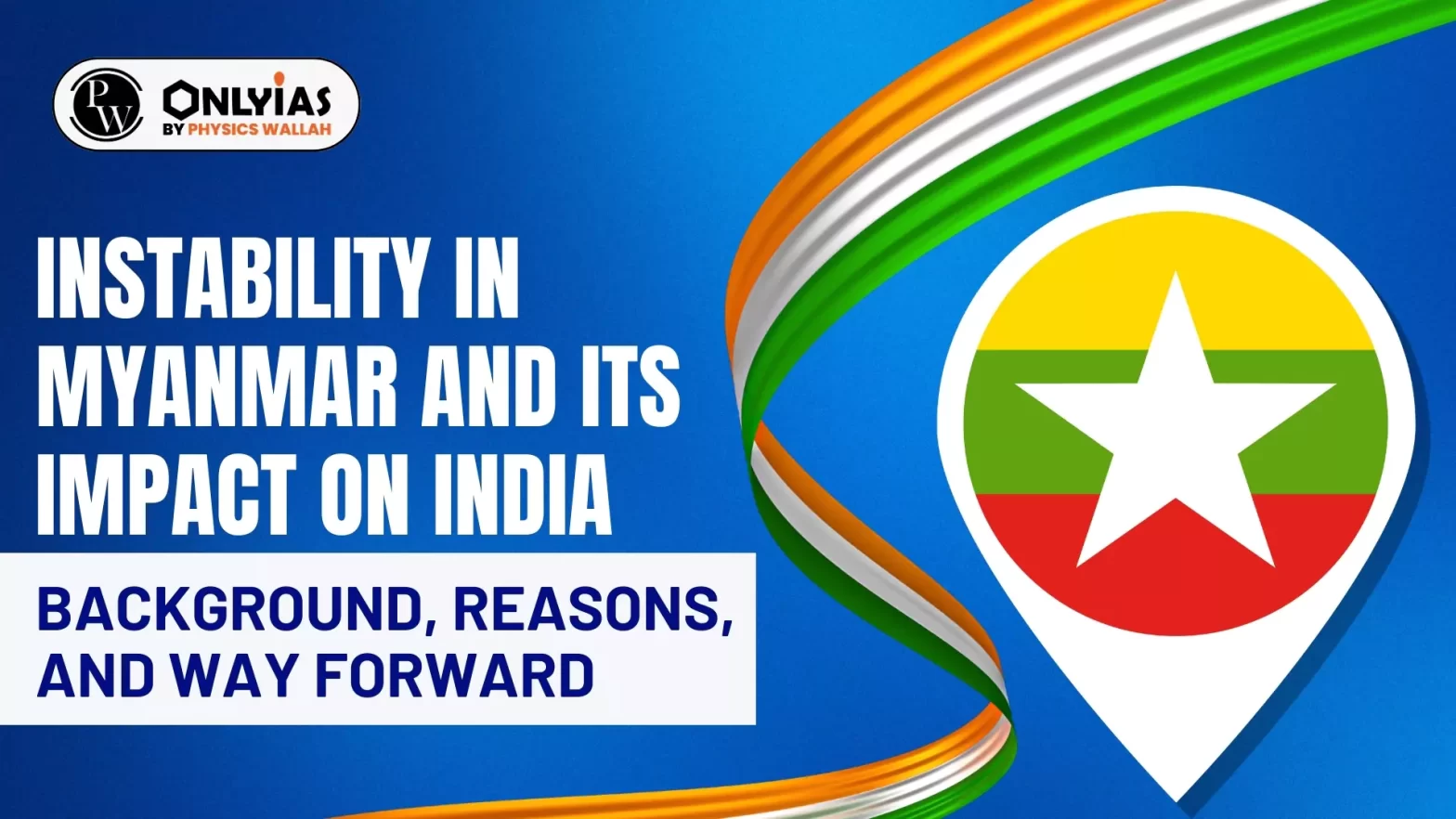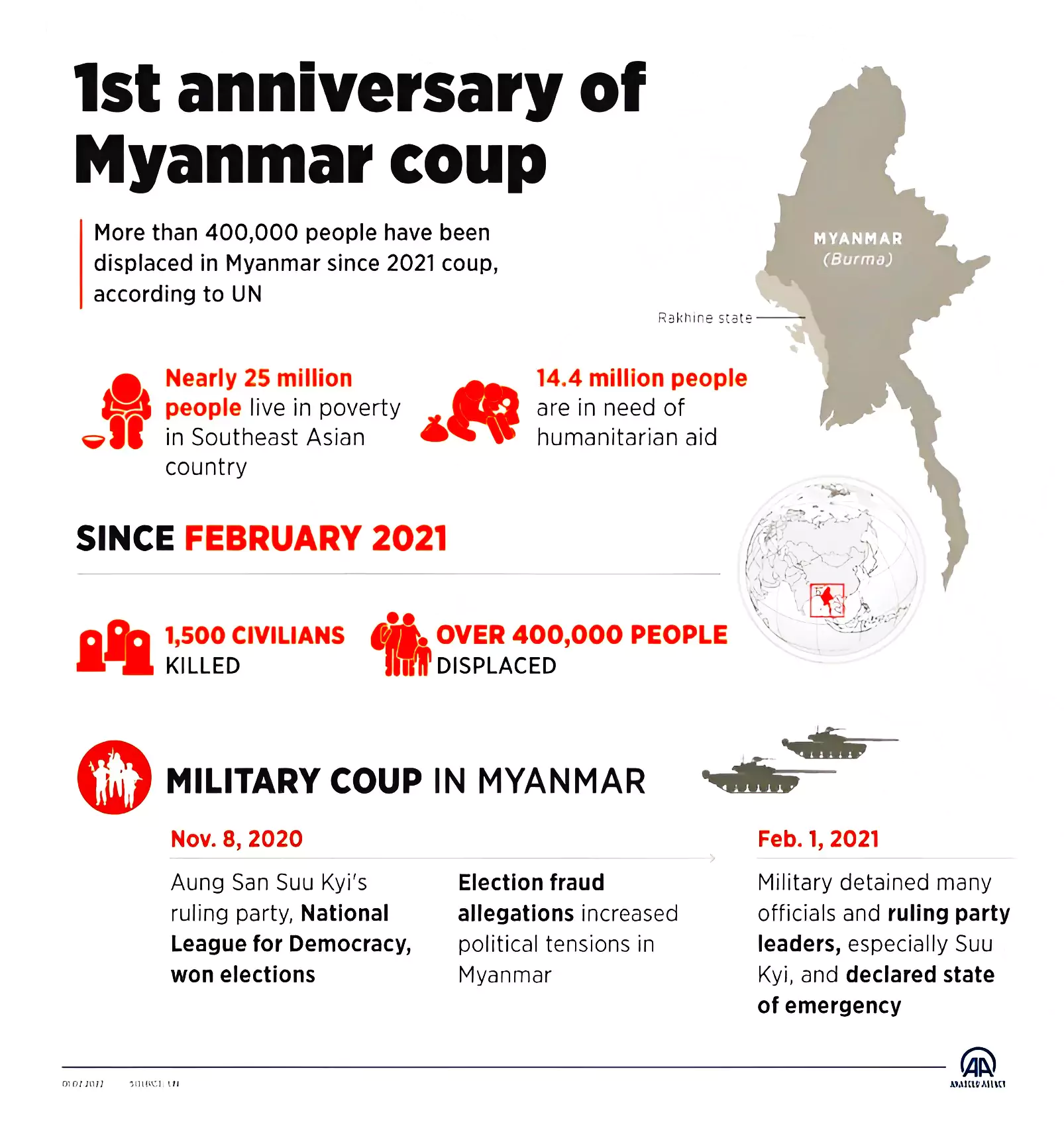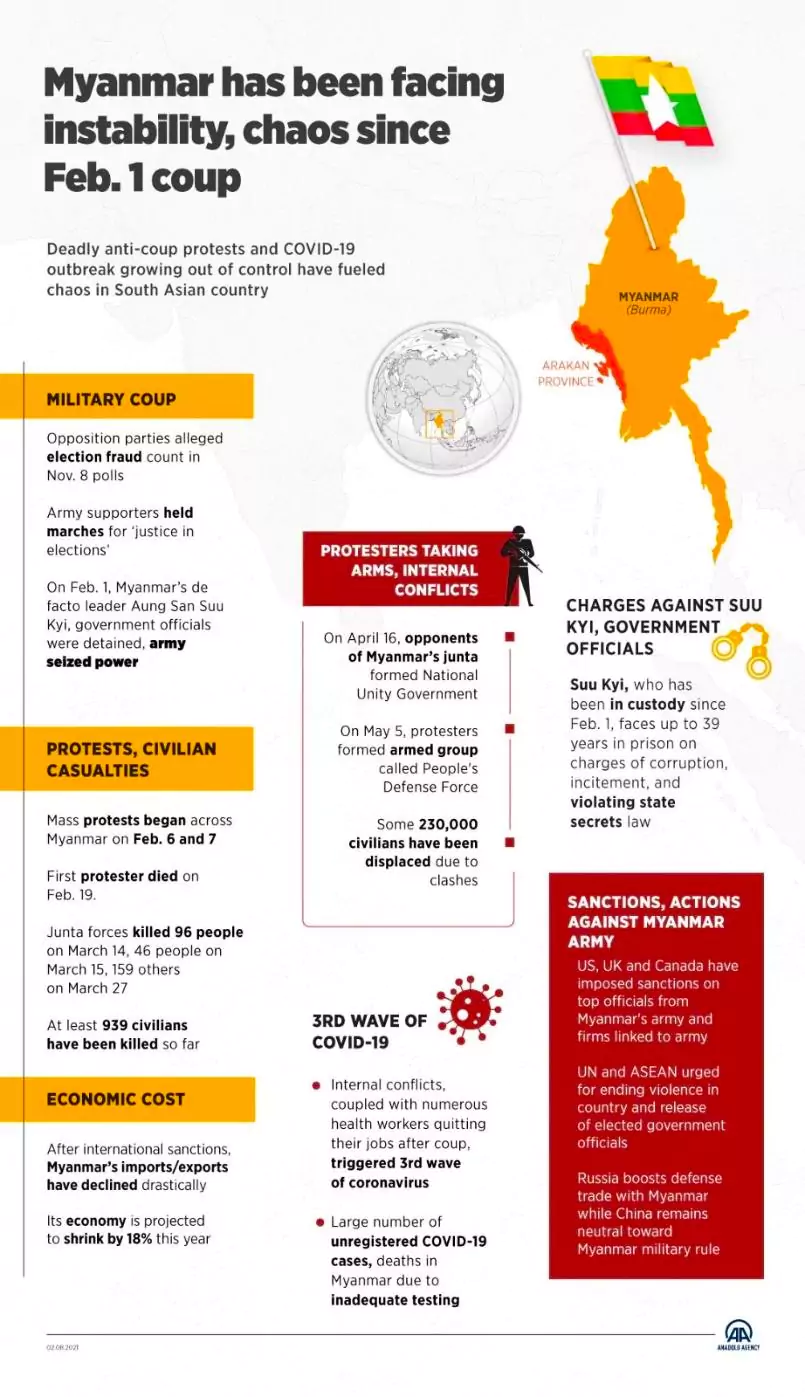Military personnel entered India and took refuge in Mizoram's Lawngtlai district after their camps were captured by the Arakan Army (AA) militants.

A large number of Myanmar Army personnel are fleeing to India as the battle with the military junta regime intensifies.


| Must Read | |
| NCERT Notes For UPSC | UPSC Daily Current Affairs |
| UPSC Blogs | UPSC Daily Editorials |
Military personnel entered India and took refuge in Mizoram's Lawngtlai district after their camps were captured by the Arakan Army (AA) militants.
The northeast states of Arunachal Pradesh, Nagaland, Manipur and Mizoram share their borders with Myanmar.
Kaladan Multi-modal Transit project involves a road-river-port cargo transport project, to connect Kolkata to Sittwe in Myanmar’s Rakhine state and then from Myanmar’s Kaladan river to Mizoram.
In 2021, the Myanmar military captured power through a coup d'etat, thus ousting the civilian government led by Aung San Suu Kyi from power. Since returning to power, the Tatmadaw (military) has launched a crackdown against the pro-democracy protesters, MPs, MLAs, and ministers belonging to Suu Kyi’s ruling National League for Democracy (NLD). Many of these politicians and protestors have crossed the border with India and took shelter in Mizoram. In retaliatory attacks, military forces have been attacked.
The Myanmar National Democratic Alliance Army (MNDAA), Arakan Army and Ta’ang National Liberation Army (TNLA), have formed the Brotherhood Alliance to fight the army.
Rohingyas are an ethnic Muslim minority group that is predominantly found in the coastal province of Rakhine. Rohingyas trace their roots to Bangladesh and were brought to Myanmar by the British. They have been facing protests from Myanmar’s majority Buddhist population.
After the first coup in the 1960s, the military rulers nationalised the resources of the country. This put its economy under international sanctions. Due to the autocratic rule, many countries have imposed sanctions on Myanmar. This has prevented trade of Myanmar’s resources.
The influx of refugees from Myanmar into Manipur was one of the reasons for ethnic clashes between Meiteis and Kukis, which resulted in the Manipur Crisis.

<div class="new-fform">
</div>